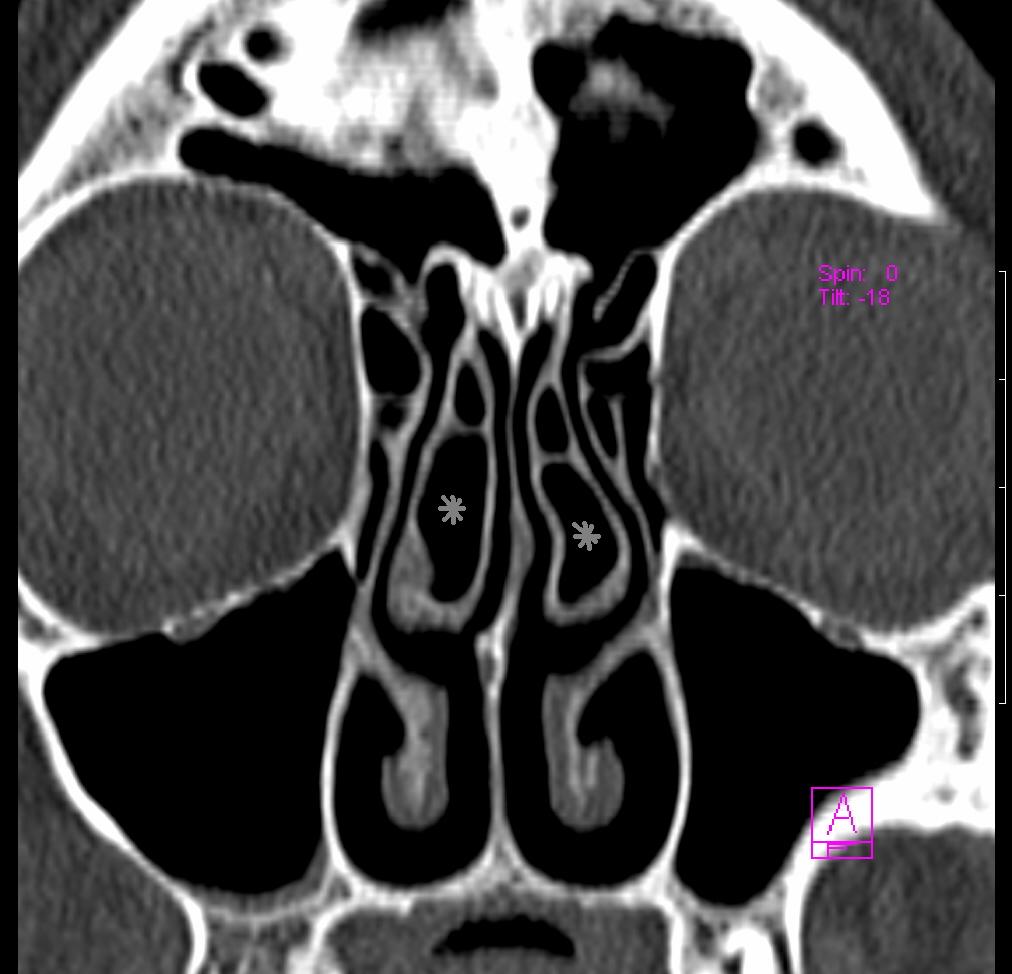Concha Bullosa on:
[Wikipedia]
[Google]
[Amazon]
 A concha bullosa is a pneumatized (air-filled) cavity within a
A concha bullosa is a pneumatized (air-filled) cavity within a
 A concha bullosa is a pneumatized (air-filled) cavity within a
A concha bullosa is a pneumatized (air-filled) cavity within a nasal concha
In anatomy, a nasal concha (), plural conchae (), also called a nasal turbinate or turbinal, is a long, narrow, curled shelf of bone that protrudes into the breathing passage of the nose in humans and various animals. The conchae are shaped like ...
, also known as a ''turbinate''. Bullosa refers to the air-filled cavity within the turbinate. It is a normal anatomic variant seen in up to half the population. Occasionally, a large concha bullosa may cause it to bulge sufficiently to obstruct the opening of an adjacent sinus, possibly leading to recurrent sinusitis
Sinusitis, also known as rhinosinusitis, is inflammation of the mucous membranes that line the sinuses resulting in symptoms that may include thick nasal mucus, a plugged nose, and facial pain. Other signs and symptoms may include fever, he ...
and various head pains related to areas innervated by the trigeminal nerve. In such a case the turbinate can be reduced in size by endoscopic nasal surgery (turbinectomy
A turbinectomy or turbinoplasty (preserving the mucosal layer) is a surgical procedure, that removes tissue, and sometimes bone, of the turbinates in the nasal passage, particularly the inferior nasal concha. The procedure is usually performed ...
). The presence of a concha bullosa is often associated with deviation of the nasal septum
The nasal septum () separates the left and right airways of the nasal cavity, dividing the two nostrils.
It is depressed by the depressor septi nasi muscle.
Structure
The fleshy external end of the nasal septum is called the columella or col ...
toward the opposite side of the nasal cavity.
One review of the septal surgery shows that significant relief of pain occurs in 65%-85% of surgeries. Screening of patients can cover presence of headache and facial pain and disability.
Some experts call pain associated with enlarged concha bullosa "rhinogenic contact point headache." In a review article of fifteen other journal articles of surgeries, significant improvements occurred after surgical treatment with a reduction from 88 (73%) to 6 (5%) patients for GRADE 3–4 MIDAS scores, and a corresponding increase in milder symptoms from GRADE 1–2 in 32 (27%) patients at 91 (76%) (''p'' < 0.001).
References
{{reflist Nose disorders